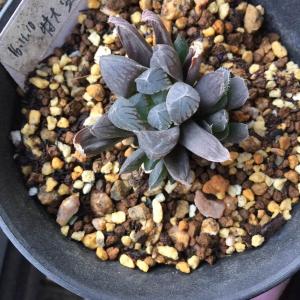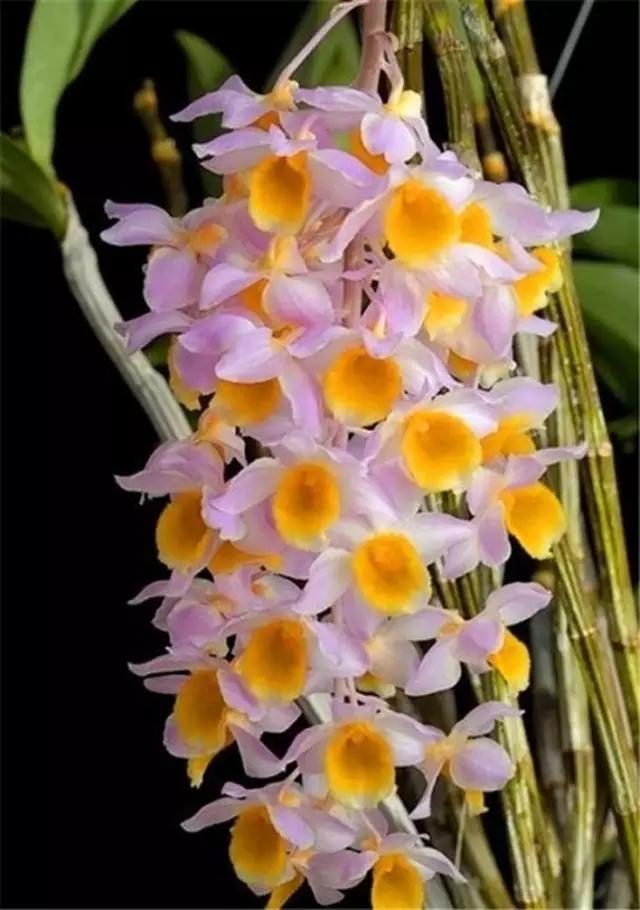文章
Miss Chen
2017年10月01日

El Crepón es un pequeño árbol o arbusto caduco que pertenece a la familia Litráceas, género Lagerstroemia, especie indica.
Sus principales características son:
Altura: 5 a 7 metros.
Diámetro: 3 a 5 metros.
Crecimiento: mediano.
Suelo: muy bien drenado y fértil.
Temperatura: tolera medianamente el frío.
Transplante: muy buena tolerancia.
Usos: ornamental.
Origen: Asia y Oceanía.
El Crespón, posee varias virtudes que lo hacen interesante en las distintas estaciones del año.
En el otoño sus hojas pequeñas adoptan tonalidades rojizo anaranjadas antes de caer, mientras que, durante el verano, la copa se cubre de racimos de flores de diferentes colores como ser blancas, rosadas, lilas o púrpuras según la variedad que se trate. Además, su corteza lisa, de color ocre, se vuelve más lustrosa a medida que el árbol va envejeciendo.
La forma del Crespón puede ser ramificada desde la base o con un solo tronco. Es una palnta de clima cálido, aunque algo resistente al frío, y rústica respecto de los suelos que necesita.
Se cultiva como ornamental. La multiplicación es por gajos y renuevos. Aunque puede plantarse como único ejemplar en jardines pequeños, las plantaciones en grupos de tres o más resultan atractivas. También puede utilizarse como árbol de vereda o de aceras.




Sus principales características son:
Altura: 5 a 7 metros.
Diámetro: 3 a 5 metros.
Crecimiento: mediano.
Suelo: muy bien drenado y fértil.
Temperatura: tolera medianamente el frío.
Transplante: muy buena tolerancia.
Usos: ornamental.
Origen: Asia y Oceanía.
El Crespón, posee varias virtudes que lo hacen interesante en las distintas estaciones del año.
En el otoño sus hojas pequeñas adoptan tonalidades rojizo anaranjadas antes de caer, mientras que, durante el verano, la copa se cubre de racimos de flores de diferentes colores como ser blancas, rosadas, lilas o púrpuras según la variedad que se trate. Además, su corteza lisa, de color ocre, se vuelve más lustrosa a medida que el árbol va envejeciendo.
La forma del Crespón puede ser ramificada desde la base o con un solo tronco. Es una palnta de clima cálido, aunque algo resistente al frío, y rústica respecto de los suelos que necesita.
Se cultiva como ornamental. La multiplicación es por gajos y renuevos. Aunque puede plantarse como único ejemplar en jardines pequeños, las plantaciones en grupos de tres o más resultan atractivas. También puede utilizarse como árbol de vereda o de aceras.




0
0
文章
Miss Chen
2017年10月01日

La Casuarina es un árbol que pertenece a la familia Casuarináceas, género Casuarina, especie cunninghamiana.

Sus principales características son:
Altura: de 20 a35 metros.
Diámetro: de 4 a 7 metros.
Crecimiento: rápido.
Suelo: se adapta a todos los tipos.
Temperatura: resiste bien el frío.
Transplante: mala tolarancia.
Usos: ornamental y forestal.
Origen: Australia.
Es un árbol muy rústico, de gran altura y rápido crecimiento.

Sus hojas, perennes, filiformes y de color verde oscuro, recuerdan el follaje de las coníferas. La copa es angostamente piramidal y el tronco, gris oscuro.
Produce frutos que forman pequeñas piñas o conos, los que maduran al final del verano. Es muy resistente a climas adversos y se adapta a todo tipo de suelos; presenta una alta tolerancia a los anegadizos o los terrenos calcáreos y secos. Además, resiste bien la acción de los vientos marinos.
Es un árbol delicado para el transplante; éste fracasa si se dañan las raíces, que suelen ser largas.
Su uso es ornamental y forestal. Se reproduce fácilmente por semillas. Suele plantarse como cortina rompevientos o pantalla, en hileras dobles o simples. No es recomendable para jardines pequeños.
Es aconsejable plantarlo en zonas marginales donde ningún otro árbol propera o para crear microclimas en esas zonas.

Sus principales características son:
Altura: de 20 a35 metros.
Diámetro: de 4 a 7 metros.
Crecimiento: rápido.
Suelo: se adapta a todos los tipos.
Temperatura: resiste bien el frío.
Transplante: mala tolarancia.
Usos: ornamental y forestal.
Origen: Australia.
Es un árbol muy rústico, de gran altura y rápido crecimiento.

Sus hojas, perennes, filiformes y de color verde oscuro, recuerdan el follaje de las coníferas. La copa es angostamente piramidal y el tronco, gris oscuro.
Produce frutos que forman pequeñas piñas o conos, los que maduran al final del verano. Es muy resistente a climas adversos y se adapta a todo tipo de suelos; presenta una alta tolerancia a los anegadizos o los terrenos calcáreos y secos. Además, resiste bien la acción de los vientos marinos.
Es un árbol delicado para el transplante; éste fracasa si se dañan las raíces, que suelen ser largas.
Su uso es ornamental y forestal. Se reproduce fácilmente por semillas. Suele plantarse como cortina rompevientos o pantalla, en hileras dobles o simples. No es recomendable para jardines pequeños.
Es aconsejable plantarlo en zonas marginales donde ningún otro árbol propera o para crear microclimas en esas zonas.
0
0
文章
Dummer. ゛☀
2017年09月28日

Camellias are one of the most popular winter- and spring-flowering shrubs, providing a vivid splash of color when little else is in bloom. Most spring-flowering Camellias prefer neutral to acid soil (between pH 7 and pH 5) so those on chalky or alkaline soil will struggle.
When to Plant
The best time to plant them is spring, when you can see the flowers, or in autumn. If you buy one in winter, keep it somewhere sheltered and plant it in spring.
Where to Plant
Most Camellias we grow are raised from four species Camellia japonica, Camellia sasanqua. Camellia saluensis and Camillia reticulate. These are understorey plants found growing under trees near the brighter edges of woods and forests, so they want dappled light in your garden, preferably with overhead leafy shelter.
If you’re growing your Camellia in a container find it a sheltered position, ideally on a north or west-facing wall. This will ensure that the early flowers do not get browned by frost which can easily happen on an cold east-facing wall where morning sun causes a quick thaw. Southern walls are generally too warm and dry.
They need a well-drained position and they will die in water-logged ground due to the lack of oxygen in the soil. They like warm, not hot summers, with plenty of humidity.
Growing Camellias in Pots
Choose a large rugged pot, terracotta, wood or stone, and part fill with ericaceous compost and then add your plant and back fill so that the level of the pot is level with the soil. Water well, preferably with water taken from a water butt. If you do use tap water, which tends to be alkaline, allow it to stand for a morning first.
Re-pot every other year into fresh potting compost. In the intervening years remove the top 2 inches (5 cm) of compost and add fresh compost. You can re-pot back into the same pot if you trim off up to a third of the roots to make room for fresh potting compost, or go up into a larger pot. This regime will keep your Camellia happy.
Growing Camellias in the Ground
Camellias are fast-growing tap-rotted plants and the new growth can snap off in windy positions so staking is advisable for the first few years until the Camellia becomes bushy. They do tolerate windy conditions however, once established, and are often used as windbreaks in gardens where they thrive.
How to Plant
Dig a hole twice the size of the pot and prepare a mixture of leaf mold, garden compost and some animal manure. If this isn’t possible use a loam based compost and add a slow release fertilizer.
Take the plant out of the pot and loosen the root ball with your fingers.
Place the plant in the hole so that the top is level with the ground. Use a bamboo cane balanced on either side of the hole if you’re unsure.
Pruning
This is best done lightly in spring after flowering, in April and May, and this is good practice with all evergreens. However pruning is not necessary! Leave it alone unless it’s got too large.
Growing from Seed
In warm gardens Camellias can set large seeds of hazel nut size inside quince-like fruits. Remove the brown seeds and push them into a pot filled with compost and grit, ensuring they are just below the surface. They will produce a plant within two years for most.
Taking Cuttings
The best time to take cuttings is between August and September. Choose new growth and cut off a section of growth. Pull side shoots away so they have a heel – a ripped off end.
Pull off the lower leaves and trim the bottom of the cutting to get rid of the wispy end and dip the cuttings into hormone rooting powder. Push the cuttings into a mixture of peat and sand and keep them in a warm place out of full sun – ideally the temperature should be 65°F (15°C). Pot up rooted cuttings in the following spring.

When to Plant
The best time to plant them is spring, when you can see the flowers, or in autumn. If you buy one in winter, keep it somewhere sheltered and plant it in spring.
Where to Plant
Most Camellias we grow are raised from four species Camellia japonica, Camellia sasanqua. Camellia saluensis and Camillia reticulate. These are understorey plants found growing under trees near the brighter edges of woods and forests, so they want dappled light in your garden, preferably with overhead leafy shelter.

If you’re growing your Camellia in a container find it a sheltered position, ideally on a north or west-facing wall. This will ensure that the early flowers do not get browned by frost which can easily happen on an cold east-facing wall where morning sun causes a quick thaw. Southern walls are generally too warm and dry.
They need a well-drained position and they will die in water-logged ground due to the lack of oxygen in the soil. They like warm, not hot summers, with plenty of humidity.
Growing Camellias in Pots
Choose a large rugged pot, terracotta, wood or stone, and part fill with ericaceous compost and then add your plant and back fill so that the level of the pot is level with the soil. Water well, preferably with water taken from a water butt. If you do use tap water, which tends to be alkaline, allow it to stand for a morning first.

Re-pot every other year into fresh potting compost. In the intervening years remove the top 2 inches (5 cm) of compost and add fresh compost. You can re-pot back into the same pot if you trim off up to a third of the roots to make room for fresh potting compost, or go up into a larger pot. This regime will keep your Camellia happy.
Growing Camellias in the Ground
Camellias are fast-growing tap-rotted plants and the new growth can snap off in windy positions so staking is advisable for the first few years until the Camellia becomes bushy. They do tolerate windy conditions however, once established, and are often used as windbreaks in gardens where they thrive.

How to Plant
Dig a hole twice the size of the pot and prepare a mixture of leaf mold, garden compost and some animal manure. If this isn’t possible use a loam based compost and add a slow release fertilizer.
Take the plant out of the pot and loosen the root ball with your fingers.
Place the plant in the hole so that the top is level with the ground. Use a bamboo cane balanced on either side of the hole if you’re unsure.
Pruning
This is best done lightly in spring after flowering, in April and May, and this is good practice with all evergreens. However pruning is not necessary! Leave it alone unless it’s got too large.

Growing from Seed
In warm gardens Camellias can set large seeds of hazel nut size inside quince-like fruits. Remove the brown seeds and push them into a pot filled with compost and grit, ensuring they are just below the surface. They will produce a plant within two years for most.
Taking Cuttings
The best time to take cuttings is between August and September. Choose new growth and cut off a section of growth. Pull side shoots away so they have a heel – a ripped off end.

Pull off the lower leaves and trim the bottom of the cutting to get rid of the wispy end and dip the cuttings into hormone rooting powder. Push the cuttings into a mixture of peat and sand and keep them in a warm place out of full sun – ideally the temperature should be 65°F (15°C). Pot up rooted cuttings in the following spring.
0
0





































